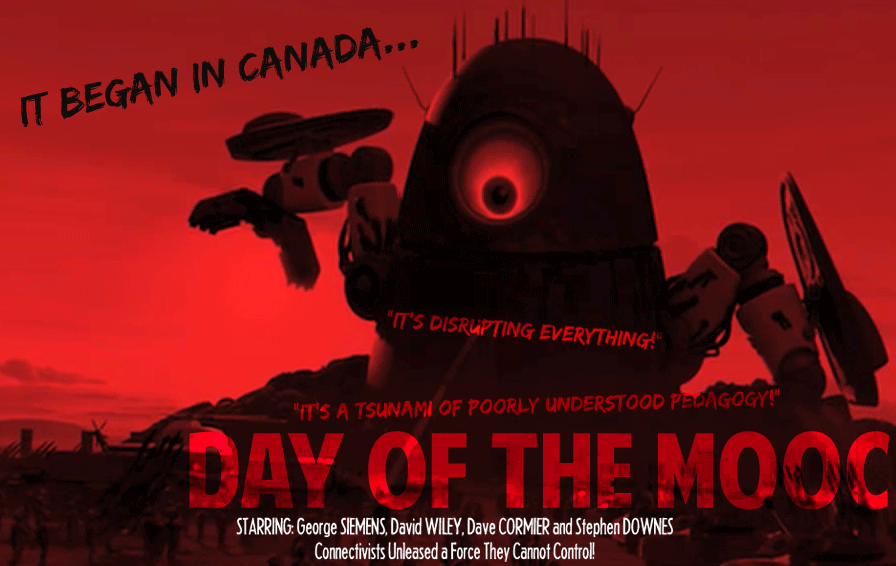Several interesting take-aways from this week’s reading – although I will only focus on a few that really struck me as intriguing points of intersections. Indeed, I really seem to have more questions than connections this time around, and so this post seems quite fragmented. But, here we go….
First: Sir Ken Robinson’s TED talk “Changing Educational Paradigms” immediately came to mind while reading Althusser (and, to a lesser extent, Hall) this week. And so, I’ll begin by sharing this:
It’s fitting, I think, to jump next into Althusser’s input on the State-then-Educational System as ideological conditional “apparatus.” The concept of reproduction is key to both Althusser and Hall (and I suspect Rickert as well), but in slightly different forms – and I think in interesting ways. Althusser is, he asserts, promoting a “theory of ideology,” and advances a number of theses. But it’s where (i.e., which border node) Althusser seems to connect to Hall in terms of behavior and ideology that I found particularly worthy of note.
Althusser’s Marxist perspective frames his text in terms of the role of production in “social formation” (1). In order to keep this social formation in place, production plays a pivotal role, but this must be “reproduced” within the population in order to maintain it. To do this, he argues that this society must “reproduce (1) the productive forces, [and] (2) the existing relations of [the dominant mode of] productions.” Further, “what distinguishes the productive forces from the means of production” [emphasis mine] is “the reproduction of labour power.” But it isn’t simple addition to the labor pool; it’s reproduction that is key. And according to this author, reproducing the “infrastructure” or the economic base isn’t enough – the superstructure of state and ideology are what support the entire structure / system.
Interestingly, just when I think this is going to be a political / Marxist critique of ideological systems, Althusser insists that he is making a distinction between the “repressive state apparatuses” or RSA (the government or police forces) and the “ideological state apparatus” or ISA (the church, education, family, and even culture and literature). It is the ISA which is at the center of his theories in this chapter. Interestingly, he distinguishes between the two, in part, by referring to the scale of their function, with the ISA functioning “massively.”
(So I wondered at this point, what would Althusser think of educational MOOCs, which by this publication weren’t even a glint in a programmer’s eye?)
The turn toward the Educational system (supplanting that of the Family-Church influence) struck me as an interesting line of thinking given our graduate-level learning is currently focused on Theories of Networks, and we know that theories cannot be ideology / bias-free. When Althusser comments on what / how students learn (“’rules’ of good behavior” as well as “submission to the rules of the …ruling ideology”), I hear him channeling good old political Marxism, with ruling classes and the working classes at odds, but with class struggles taking place at these ISA sites.
(Would Foucault see these sites as nodes of differance?)
In other words, it isn’t enough to reproduce the working class system; the “relations of exploited to exploiters and exploiters to exploited” must also be reproduced. Thus, the nodes of the network PLUS the network relationships themselves are informed and multiplied.
Althusser’s a bit of a tough go for me at this point, but several of his points seem to provide potential connections into Hall’s article worth highlighting for future comparison to Rickert:
- An individual’s “ideas are his material actions inserted into material practices governed by material rituals…themselves defined by the material” conditions / apparatus from which those ideas emerged.
- “individuals are always-already subjects. Hence individuals are ‘abstract’ with respect to the subjects which they always already are.” (This reminded me a bit of the Hall comments about the relationship between individuals and society when it comes to mass communication methods and coding/decoding.)
Hall takes it from here: writing about mass communication studies as overly “linear” and lacking “a structured conception of the different moments as a complex structure of relations” (478), his statement strikes me as a possible push back to Althussers’ superstructure / linear materiality of these important relationships within complex systems involved in a “production process” (Hall 479). While Althusser focuses on ideological (re)production, Hall’s focus is on the systems of mass communication and coding/decoding messages passing through those systems (mainly television). Perhaps we might consider this a layer deeper – at the “genetic” levels” – of these infrastructures.
First, Hall defines codes as “the means by which power and ideology are made to signify in particular discourses” (483). So if Althusser is concerned with ideologies’ reproduction through dominant systems like government-run educational institutions, Hall jumps into the deeper end of this pool on the subject of another object of similar charges – mass media. Rather than Althusser’s theorizing of the ideology itself, Hall’s focus is on the communication process – specifically explaining the four stages of communication: production, circulation, consumption (or use), and reproduction. Interestingly, Hall’s comments bear a similar tone to Althusser’s when he says that messages are imprinted by “institutional power-relations” at each of these four stages, essentially “reproducing a pattern of domination” (477). Each of these moments, he argues, should be seen as “different moments” in a “complex structure of relations” (478). Relations which, at least according to Althusser, are marked by public behaviors commensurate with some form of conditioning – or as Hall would assert, a coding and decoding.
Hall pushes back against theorists who linger too long over the outcome of behavior in this media-ideological brewing pot (480). Instead, he fixes his gaze on the communication Production-to-Reproduction scale and the naturalization of some meanings due to wide distribution. This, he says, has an “ideological effect” of “concealing the practices of coding which are present.”
(Is this, then, what Althusser would see as the process used by the ISA? And what would Foucault say or add to this?)
These codes become wrapped in Hall’s nuanced meanings of connotation and denotation as they infuse the “structure of discourses in dominance” where meanings can be mapped into hierarchical and “dominant or preferred meanings” (483). This power of relationship ties between coding and decoding bring to mind our early discussions of Hardware Theory, and the compartmentalized nature of that communication system.
(I wonder – how have digital spaces impacted this, especially as Hall asserts that dominance = a “pattern of ‘preferred readings’” that are distributed through these systems of mass communication?)
So Hall’s discussion of coding and decoding and the relationships between those two acts as independent yet co-limiting, creating a system of dependence and even perpetual balance which he calls “a fundamental alignment and reciprocity” (481) is at the root of “class struggle in language” (482), reflections of how ideology affects discourse at the connotative level.
Final note: Hall’s argument is situated in the midst of mass communication systems (like television) being theorized as ideological influences upon public behavior. He insists that it isn’t the behavior we need to study – it’s the system by which messages are coded and decoded in discourse that deserves closer study. Also of interest is his approach to the “subjective capacity” of television’s power to mediate / transfer messages and meaning (485). Althusser states that “actors…and their respective roles, are reflected in the very structure of all ideology,” but does that mean they are no longer individualized in his theorizing? Hall seems to think such individualization vs. subjectivity when it comes to successful decoding has been misrepresented. He argues that miscommunication happens – not because individuals “misinterpret” the messages intended meanings, but because there is a lack of reciprocity between the first and fourth stages of the communication process.
The idea of how knowledge (and ideologies) are transmitted and/or infused into a network or community is one that carries with it all sorts of sharp edges. Educators can either be facilitators of knowledge creation and transfer, or we can be ideological reproductive agents. According to Ken Robinson, our traditional system of education is a mass production line from K-16.
Are MOOCs treated with such critical suspicion in part because their structures violate this system?
And so, the final connection: Hall writes about the influence of the media to shape and transmit the “structure of discourses in dominance” (483). His “definition of a hegemonic viewpoint” as one which “defines within its terms the mental horizon … of possible meanings of a whole sector… of society” (486) seems to serve as the “how” to Althusser’s argument that ISAs (education) create that horizon. Class struggle for both authors begin, then, with communication networks.
Works Cited:
Althusser, Louis. “Ideology and Ideological State Apparatus.” Lenin and Philosophy and Other Essays, Monthly Review Press 1971. Web (www.marxists.org).
Hall, Stuart. “Encoding, Decoding.” The Cultural Studies Reader, 3rd ed. Simon During, Ed. New York: Routledge, 1993.






